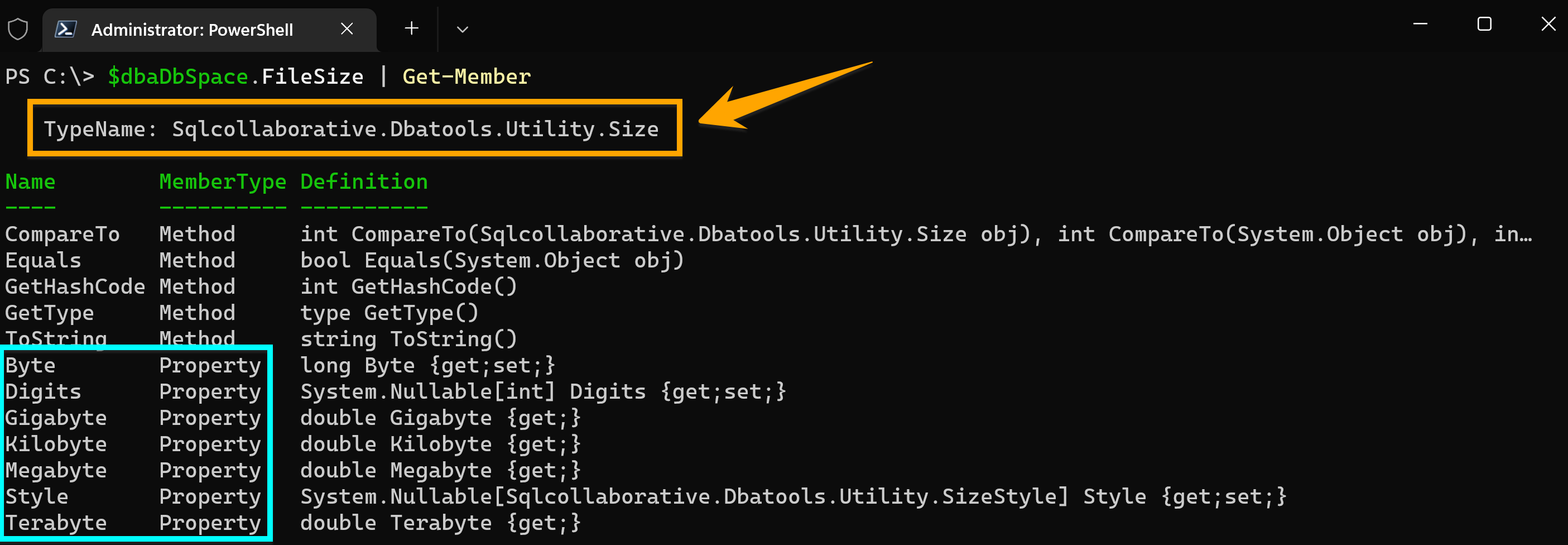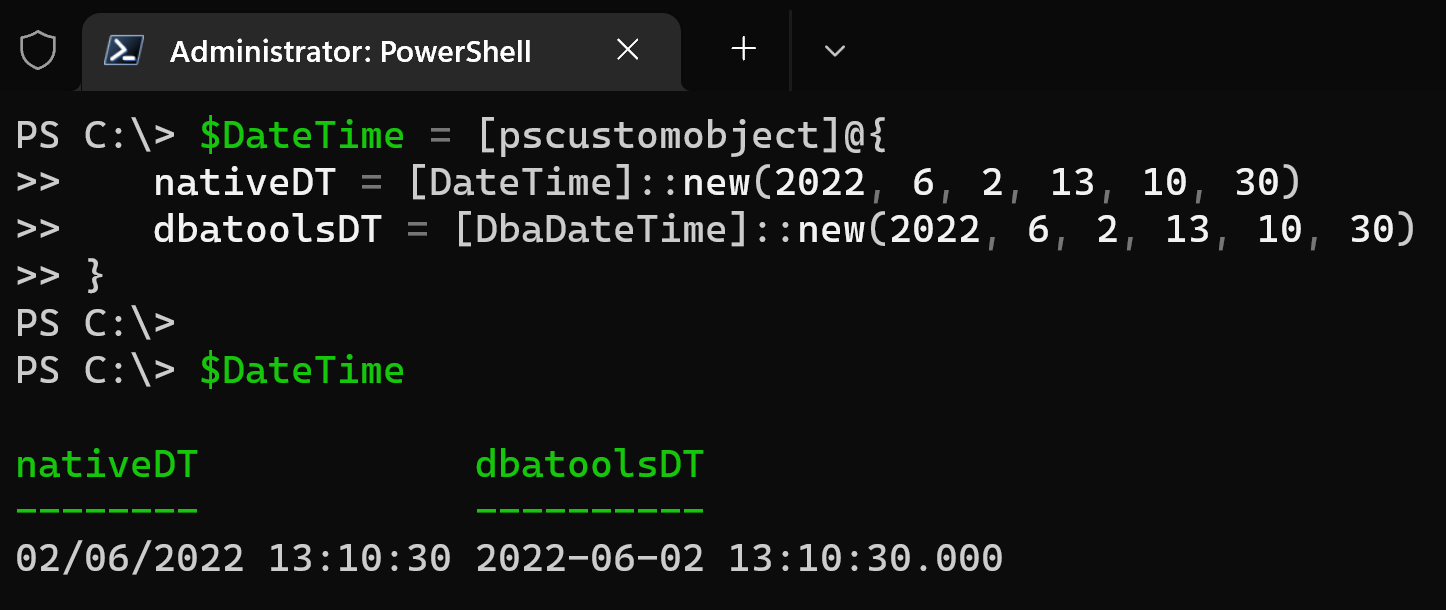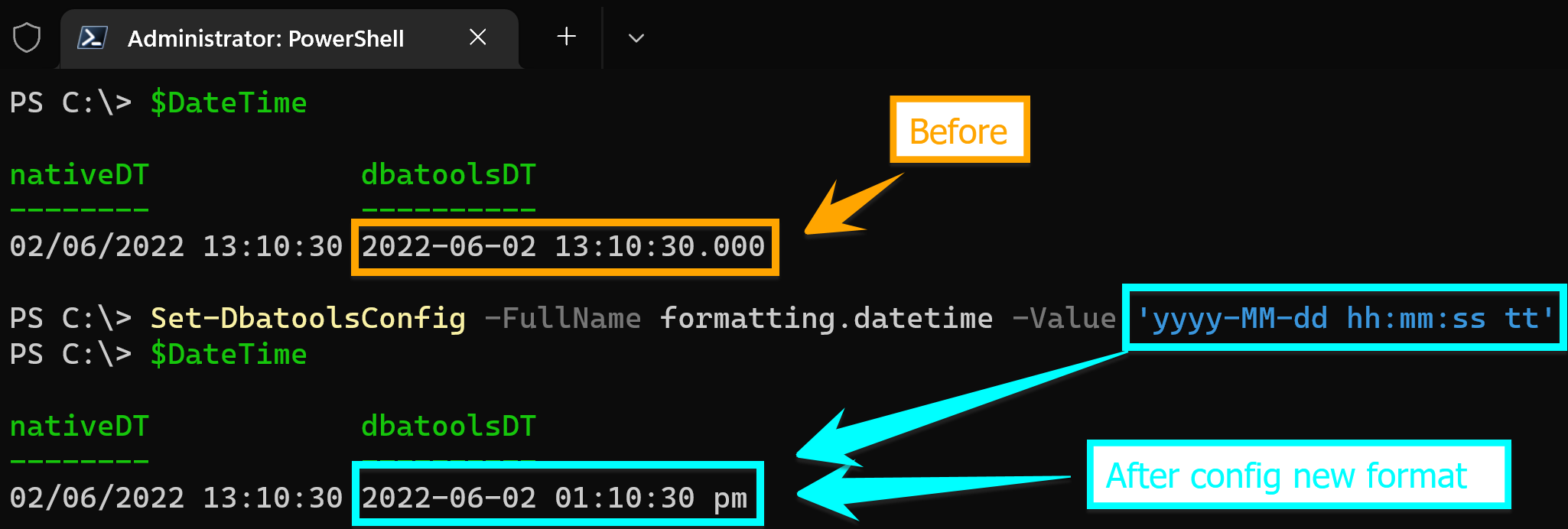dbatools - rich datatypes
Some datatypes can be shown in so many different forms (think measurament units, dates with short/long forms, or regional settings) that can be difficult to have a standard.
What should we show? Sizes should be always in bytes? It will be easier for you to interpret 1610612736 bytes or 1.50 GB?
That’s why we have created some rich datatypes like, DbaTime, DbaDate, DbaDatetime, DbaTimeSpan, PrettyTimeSpan or DbaSize to make it easier to read and be more consistent acrross multiple commands.
How to identify the property datatype?
When we run a command, just by looking into the output we can’t infer the datatypes being used by each property.
To check a property datatype we can make use of Get-Member cmdlet.
NOTE: I’m using our docker images to run the example.
$dbaDbSpace = Get-DbaDbSpace -SqlInstance localhost:14334 -SqlCredential (Get-Credential -UserName sqladmin) -Database StackOverflow
$dbaDbSpace | Get-Member

This shows that some of our proprieties are of the type of Size.
If we go one level deeper and run
$dbaDbSpace.FileSize | Get-Member
We can then see the full TypeName that our property FileSize has - Sqlcollaborative.Dbatools.Utility.Size.

And, as we can also see from the output, this type as multiple properties.
This means that we can easily get the value in any of the other different units available just by reading that property.
Example if you want to read the FileSize in Byte for the data file, you can get it like this:
($dbaDbSpace | Where-Object FileType -eq 'Rows').FileSize.Byte

If you want to see all properties and values
$dbaDbSpace | Where-Object FileType -eq 'Rows' | Select-Object -ExpandProperty FileSize

DbaDateTime
On a different example let’s use the Get-DbaInstanceInstallDate command to show that the SqlInstallDate has the DbaDateTime datatype.

To show the differences between native Datetime and our DbaDateTime you can run the following code:
$DateTime = [pscustomobject]@{
nativeDT = [DateTime]::new(2022, 6, 2, 13, 10, 30)
dbatoolsDT = [DbaDateTime]::new(2022, 6, 2, 13, 10, 30)
}
$DateTime

PrettyTimespan
PrettyTimespan is another rich datatype that we use, as example, at Test-DbaNetworkLatency or Import-DbaCsv commands.
Here is an out of the box example comparing native vs dbatools:
$timespan = [pscustomobject]@{
nativeTimespan = [Timespan]::FromMilliseconds(29.69)
dbatoolsPrettyTimespan = [PrettyTimespan]::FromMilliseconds(29.69)
}
$timespan

Which one is prettier? :-)
If you are curious how we do it, here is an example. When the timespan is less than 1 second, we format
the value as XX ms
Defaults and configurations
Out of the shelf, dbatools uses some defaults.

You can find them using the Get-DbatoolsConfig -Module formatting command.
Note: Make sure you read our configuration post to learn more about them.
Configuration example
Let’s say you want to see your DateTime using the 12 hour format (with AM and PM) instead of 24h and without the milliseconds.
We can make it by changing the formatting.datetime configuration
Set-DbatoolsConfig -FullName formatting.datetime -Value 'yyyy-MM-dd hh:mm:ss tt'
Now, if we output the content of our $DateTime used before we see the new format for the DbaDateTime.

Hopefully you find this information useful and now you can easily adjust to your needs. :-)
Thanks for reading!